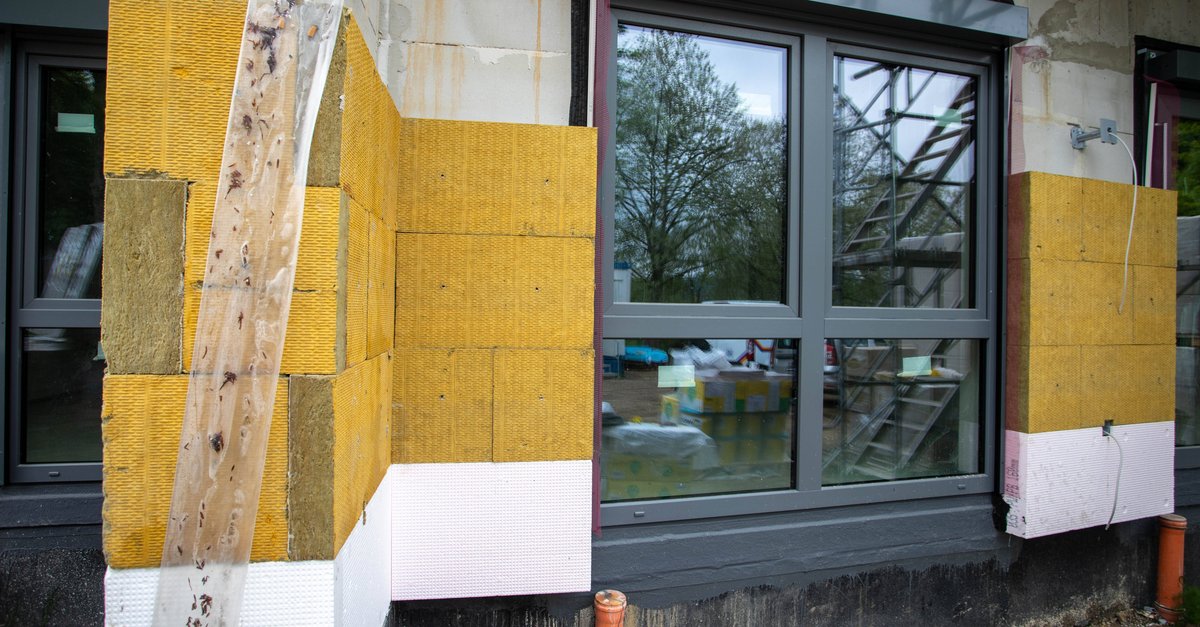Thermal insulation composite system: structure, costs & disadvantages
The best recipe for lower energy costs: Here you can find out everything about the structure, the costs and the potential pitfalls of the thermal insulation composite system.
Creating a comfortable home that is both environmentally friendly and reduces heating and cooling costs is a goal many homeowners strive for. This is where thermal insulation composite systems come into play. This intelligent solution for thermal insulation of buildings offers numerous advantages, but also poses some challenges. In this article we will take a closer look at the structure, costs and possible disadvantages of thermal insulation composite systems.
In our video we clarify whether the heat pump is really worthwhile as an energy saving option:
How is a thermal insulation composite system structured?
A thermal insulation composite system consists of several layers that are applied to the outer wall of the building. The core of the system is the insulating material, which consists of materials such as polystyrene (EPS), mineral wool or polyurethane consists. This layer minimizes heat loss and thus contributes to energy saving. The insulating material is followed by a reinforcement layer, consisting of fiberglass fabric or mesh, which improves the strength and durability of the system. Everything is rounded off by a layer of plaster, which not only protects, but also offers aesthetic design options to customize the building.
The advantages of thermal insulation composite systems are considerable. through the improved thermal insulation of the building heating and cooling costs can be significantly reduced. This not only leads to financial savings, but also to a reduction in energy consumption and therefore a smaller ecological footprint. In addition, thermal insulation composite systems offer improved sound insulation, which dampens unwanted noise from outside and creates a quiet living environment. Increasing the surface temperature also avoids the formation of condensation, which minimizes the risk of moisture damage and mold growth.
How much does a thermal insulation composite system cost?
The cost of a thermal insulation composite system can vary greatly depending on various factors. These include the size of the building to be insulated, the materials chosen, the region-specific prices and the labor costs. As a rule, the costs for a thermal insulation composite system are low between 80 and 120 euros per square meter. However, it is important to note that this is only a rough estimate and that you should allow for additional costs for any prep work, surface preparation, window and door finishes, and additional design options. In order to get more accurate cost estimates, it is wise to seek quotes from multiple professionals that meet the specific needs of the project.
In our series of pictures, we show you 19 ingenious tricks on how you can immediately save money when heating:
What are the disadvantages of a thermal insulation composite system?
As with most construction projects, thermal insulation composite systems have some disadvantages and limitations. The biggest The downside is the initial cost. Installing a thermal insulation composite system can be more expensive than other forms of thermal insulation. However, it is important to consider the long-term energy savings and associated benefits to properly assess the overall cost-benefit balance.
Another issue is fire protection. Some insulating materials in the thermal insulation composite system can be combustible, therefore special fire protection measures must be takento ensure security. In addition, some interior space is lost during installation as the insulation is placed on the outside of the building. Improper installation can also promote the occurrence of moisture problems and promote damage and mold growth.
Don’t want to miss any more news about technology, games and pop culture? No current tests and guides? Then follow us Facebook or Twitter.



